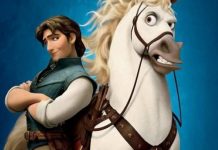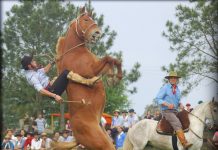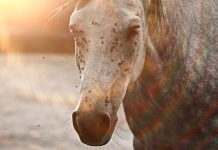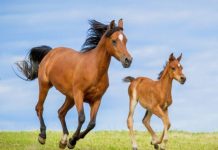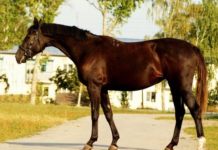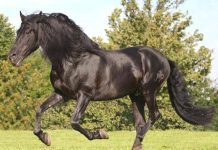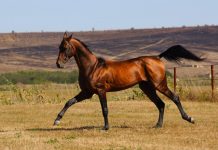A Friesian is breathtakingly beautiful. Black, shiny fur, a flowing mane and tail, and lush hangings – these are the “black pearls” of the Netherlands.
It seems as if he is aware of his beauty because hardly any other horse breed presents itself as elegant and self-confident as the Friesian.
Breed description

The Friesian is one of the oldest horse breeds in Europe. The horse breed comes from the Netherlands, from the province of Friesland. The name of the Frisians is also derived from the place of origin.
The Friesian is a warmblood with a slight cold blood impact and is bred in pure breeding, that is, without crossbreeding with foreign blood.
Size: 155 – 170 cm
Weight: 500 – 700 kg
Origin: Netherlands
Lifespan: 25-30 years
Color: black
Dressage, leisure, show, tournament
Origin and breed history
The first horse whose appearance could be assigned to a Friesian horse was first mentioned in Roman times.
Today’s Frisian, as horse lovers know and love him, was created in the 16th and 17th centuries when Spanish horses were mated with the cold-blooded horses that were common in the Netherlands at the time.
Since the Netherlands was occupied by Spain at that time, the Spaniards brought their thoroughbred warmblood horses into the country.
The Frisians were first known as the heavy and large knight horse and workhorse. It was only after the Spanish Warmblood horses were crossbred that the Friesian was bred as a baroque horse infamous stud farms as a draft horse for the luxury carriages of high society.
Early 19th In the mid-20th century, the Frisians went out of fashion. Gradually, the pure breeding of this majestic horse breed was neglected. In 1910 there were only four stallions left of the magnificent Frisians.
Three years later the number of stallions shrank to three stallions, Prins 109, Alva 113, and Friso 117. This wonderful and beautiful horse breed almost became extinct and thus a part of Dutch history, since the “black pearls” of Friesland was the only Dutch horse breed.
Some horse breeders did not want to allow this and are working together to save this ancient and valuable breed.
The Frisian today
Enormous efforts were required on the part of the breeders to preserve and spread this noble breed. The population was preserved by inbreeding within a very small population of Frisians and slowly but steadily increased again.
After the crossbreeding of the Spanish warmblood horses, blood from other breeds was never again fed. As a result, an inbreeding factor is determined for every Frisian who is registered in the Dutch Breeding Association, which shows the percentage of the genetic makeup of this horse with inbreeding.
In addition, the selection process for stallions approved for breeding is one of the strictest in the world. Every year the young stallions are presented to a jury.
The stallions are usually around two and a half years old at this point. However, older stallions who have already had some success in equestrian sports, for example, may also be presented.
The jury will now make a preselection. The selected stallions are then again assessed twice at a central licensing in January of the following year. The remaining stallions who made it through the evaluations now have to face the so-called stallion performance test.
The stallion performance test takes place in the autumn of the same year. The stallions are now just under three and a half. The stallion performance test consists of several categories, including appearance, gait, willingness to work, and even behavior in the stable.
Here, too, not all stallions that took part in the stallion performance test pass. If the Friesian has successfully passed the test and has been approved for breeding, he has to present himself to a jury every year. The stallion’s first foals contribute significantly to his position as a stallion.
They are assessed for one year, two years, and three years. If these evaluations are bad, the stallion will be licensed immediately and taken out of breeding. If the result is positive, this stallion will keep his approval.
The appearance of the Friesian horse
The Friesian is a powerful warmblood. He has a noble head and dark, large, and expressive eyes. The neck is set high and elegantly curved. The chest is broad, the croup slightly split and sloping.
The flowing mane is lush, as is the long, low-set tail. There are lush hangings of goats on the fetters. The mares reach a height at the withers of 155 cm to 165 cm. The stallions are correspondingly larger, they can reach a height of up to 175 cm.
To be admitted to the licensing, a three-year-old stallion must be at least 158 cm tall. A Frieze weighs between 550 kilograms and an impressive 750 kilograms. The Frisian is known for his surefootedness in all three gaits.
When trotting, the Frisian shows a high knee action, that is, a pronounced lifting of the front legs. Together with the strong thrust of the hindquarters, a wonderful trot with clear phases of suspension results.
The gallop is a “swing gallop”. The coat color of the Frisians – black is not always black. The Friesian is only bred as a black horse.
Smaller white markings on the head, around two euros each, such as a flake, a star, or burin hair are permitted, as well as some gray hair on the upper or lower lip. White markings on the legs, on the other hand, are not allowed.
The Friesian is not born a black horse, but the fur of the foal is brown. The Frisian knows three different shades of black: gloss black, winter black, and matt black. The so-called gloss black horse is a Frisian whose fur is deep black and shines regardless of the season. This shade is often referred to as “lacquer black”.
The name “winter black horse” refers to a Friesian who is jet black in winter, but whose fur is somewhat lighter in summer and thus takes on a slightly reddish-brown shimmer.
The frieze, whose fur always has a brownish sheen and does not shine as strongly as that of the glossy black horse, is considered to be “matt black”.
Temperament and essence

The Frisian carries his magnificent head with expressive eyes high and with pride. Despite its imposing and noble appearance, the Friesian is not a difficult horse. The Friesian is a gentle, friendly horse who is very fond of his people.
He is patient, willing to work, and has strong nerves. The Friesian becomes the ideal family horse due to its balanced and sociable character.
Husbandry and nutrition
Attitude
The Friesian has a dense coat, which is why it can easily be kept in the pasture or in an open stable.
Nutrition
The Frisian is also frugal when it comes to nutrition, he is easy to feed, so a good feed user.
High-quality feed is of course the be-all and end-all when keeping horses. However, the feed should not contain too much protein.
Education and care
The upbringing of a Frisian is quite easy because the Frisian is very willing to work, curious, and good-natured. That is why this breathtakingly beautiful horse breed is often used for shows or gala performances.
In the CAVALLUNA show “World of Fantasy” the visitor could admire four of these wonderful horses. The Portuguese Filipe Fernandes is very proud of his beautiful and clever Frisians.
No wonder, because if you watch the animals at work, you can see how much they like to present themselves and how much fun the Frisians show their skills.
Caring for a Friesian is not very different from caring for other breeds of horses. You should brush and comb your fur, tail, mane, and hangings regularly to keep your Friesian horse healthy.
The hooves, eyes, and ears also need attention and care. You can get the right brushes and combs in every specialist shop.
Health and Typical Diseases
A Frizian is no more or less susceptible to disease than other horse breeds. As a rule, a Frieze has robust health. Because of the lush droppings, the owner should pay more attention to signs of malaise.
If the Frizian does not stand in the mud and dirt for hours, the Mauke is no problem either. The litter in the box must not be too damp. Due to the size, joint diseases may occur.
The Friesian is also prone to sweet itch. Because of the high level of knee action, the Friesian is prone to kneecap dislocations. Therefore, you should have your Friesian knees checked regularly.
The life expectancy of the Frisians
With sensible care, nutrition, and care, your Friesian can live between 20 and 25 years.
Buy Friesian horse breed
Buying a Friesian horse is made easy for lovers of the horse breed. Too easy, because in countless classified ads, Frisians are offered for little money.
You should exercise caution here. Frisians are one of the most expensive horse breeds. With luck, you can buy a very good and healthy Frisian from $5,500 and up. But this is usually the exception and a good place here comes before the money.
If you want a healthy Frisian, I turn to a good breeder. Clubs can help you with the addresses of recognized breeders.
Please keep in mind that a good, healthy Friesian horse of impeccable character cannot be had for $5,500 or less.
Decision support
Frisians are robust, willing to work, curious, and docile. They are ideal leisure horses, but also cut a fine figure in dressage.
They are very people-oriented and learn small tricks with enthusiasm. The Friesian is the ideal show horse because he simply enjoys showing what he can do.
If you are looking for a beautiful horse with temperament, grace, and elegance, then you should think about buying a Friesian horse.
FAQ: Frequently asked questions

How much does a Friesian horse cost?
For broken-in animals aged 6-8 years: mare (depending on breeding suitability) $5000 to unlimited, stallion $4500 to approx. $8000 without breeding ability.
A gelding costs between $4500 and $8000 depending on the exact level of training.
What is a Friesian?
The Friesian or the Friesian horse is one of the oldest horse breeds in Europe, it is a Dutch horse breed that originally comes from the province of Friesland and is now bred in pure breeding without crossbreeding.
How old does a Frisian get?
With sensible husbandry, nutrition, and care, a Friesian can live between 20 and 25 years.
What does a Frisian weigh?
The weight of the animals levels out between 520 and 770 kilograms.
When does a Frisian mature?
The main growth phase in horses is completed very early at around 12 months of age. The actual maturation, however, only takes place at the age of 4-5 (in the case of the Friesian horse, a little later).







